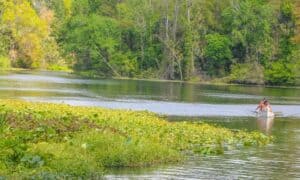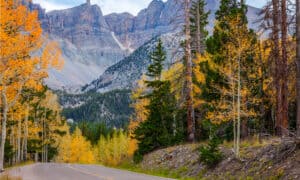If you have ever seen the movie Madagascar, you probably know that the island country is home to many interesting animals, including lemurs like King Julian. Madagascar is a beautiful place to visit if you are interested in wildlife and traveling there can be a unique opportunity to see endemic species. This article will break down 3 beautiful national parks in Madagascar – when to visit, what animals live there, and what activities are available for tourists.
1. Isalo National Park
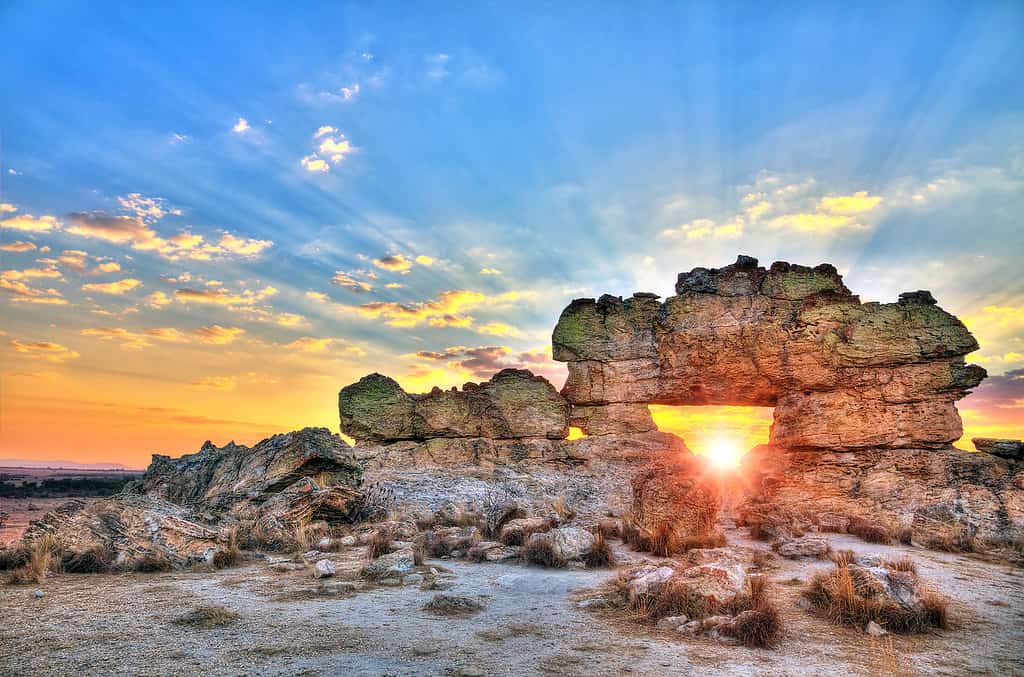
Sunset at the famous rock formation ‘La Fenetre’ in Isalo National Park.
©Dennis van de Water/Shutterstock.com
The first national park in Madagascar to explore is Isalo National Park. This park encompasses an area of 315 square miles and became a national park in 1962. Isalo is the most popular national park for tourists and has the most visitors annually. It is in the Ihorombe Region near the town of Ranohira. The terrain in the park is predominantly sandstone and consists of rocky areas, canyons, dry deciduous forests, and vast plains. The Isalo Massif in the southern Morondava Basin is a major geological formation in the park, but the most picturesque is La Fenetre during sunset. Erosion over the millennia has also created canyons up to 600 feet deep.
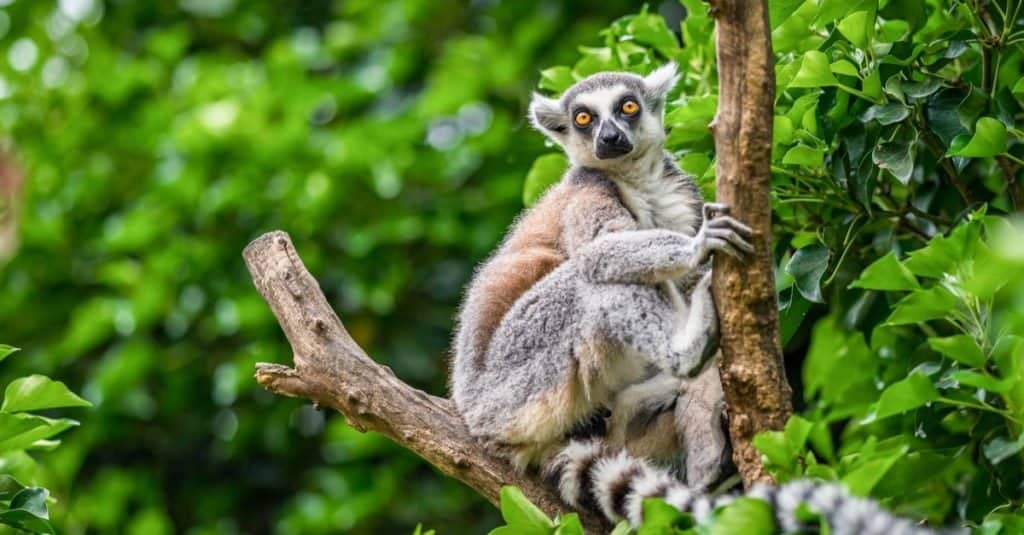
Ring-tailed lemurs (
Lemur catta) live in Isalo National Park and are endemic to Madagascar.
©Ondrej_Novotny_92/Shutterstock.com
There is a great diversity of wildlife in Isalo National Park including several species of Madagascar’s famous lemurs. The lemur species in the park include the ring-tailed lemur, Verreaux’s sifaka, red-fronted lemur, gray mouse lemur, red-tailed sportive lemur, and Coquerel’s giant mouse lemur. In total, there are 14 species of mammals in the park and over 100 species of birds. Notable bird species are Benson’s rock thrush, the African comb duck, and the Madagascar ibis, a near-threatened species endemic to the woodlands of Madagascar.
When you visit the park, there are numerous fun activities available for tourists. Visitors are required to have a local guide upon entering. You can immerse yourself in nature by going on nature walks, birdwatching, and multi-day trekking excursions. Be sure to visit the popular swimming pools where you may have the opportunity to see Benson’s rock thrush. Also, consider avoiding the wettest season. The most rainfall occurs between December and February.
2. Masoala National Park
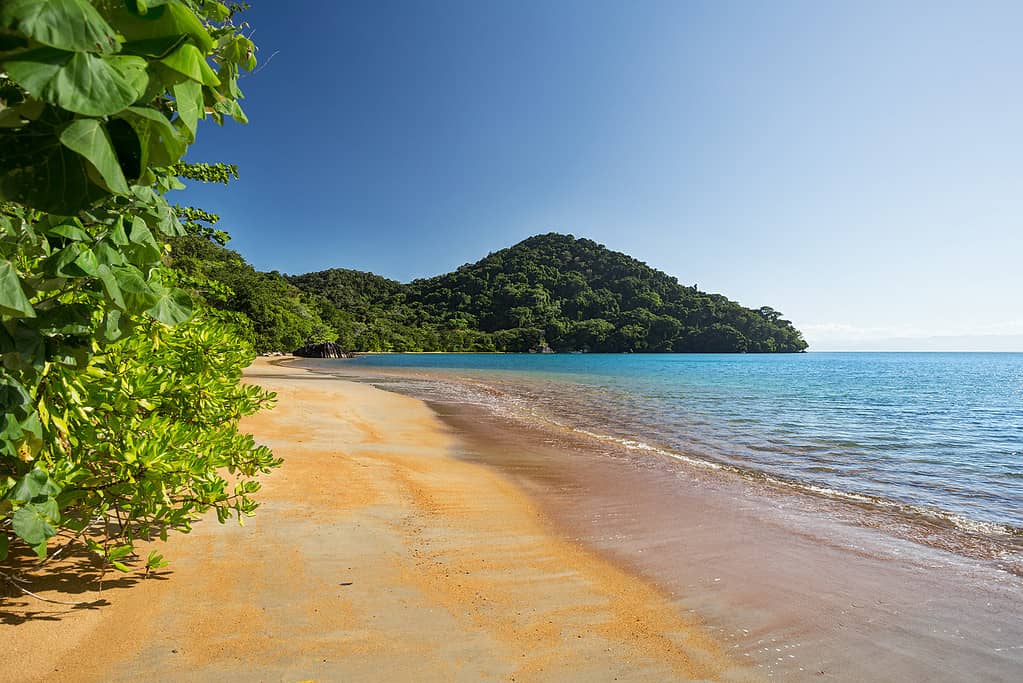
This beautiful beach exhibits coastal forests and marine habitats that are protected in Masoala National Park, Madagascar.
©Artush/Shutterstock.com
Masoala National Park is the largest national park in Madagascar. Its status protects 930 square miles of rainforest, coastal forest, marsh, mangrove, and marine habitats like coral reefs. It also became a UN World Heritage Site in 2007. The park is only accessible via a 3-hour boat ride.
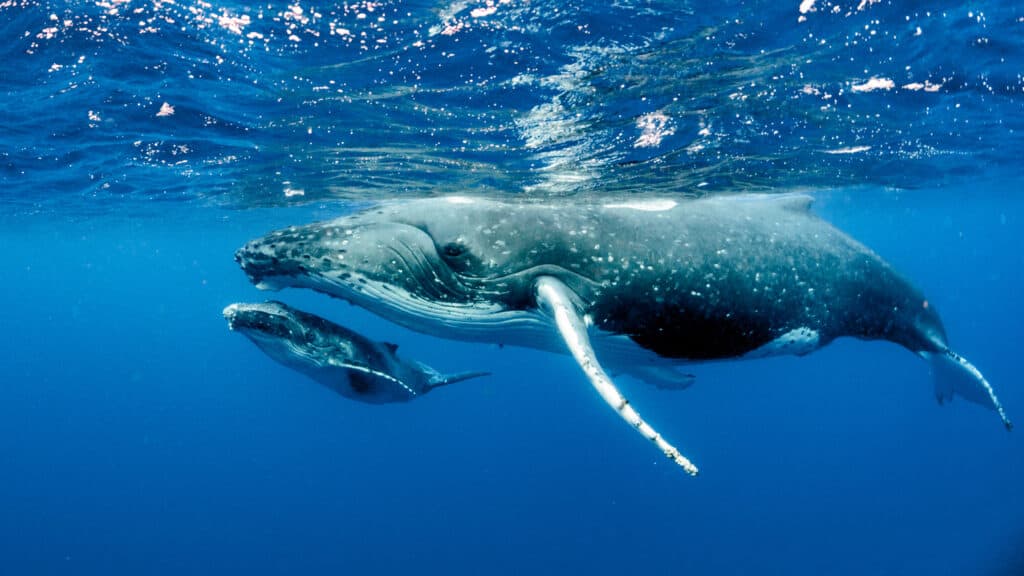
Humpback whales migrate to the waters of Masoala seasonally.
©Imagine Earth Photography/Shutterstock.com
There is an abundance of wildlife in Masoala National Park. Interestingly, there is an annual migration of humpback whales to Antongil Bay from July through early September. The park is also home to 10 lemur species. Another fascinating resident is the Madagascar serpent eagle. This magnificent bird was believed to be extinct but was rediscovered and currently resides in the park. You may also have the chance to see the elusive aye-aye on Nosy Mangabe island reserve which you can access by boat.
When visiting, consider that the park may be inaccessible during cyclone season between January and March. It is an exceptionally wet part of the country, and the driest months are September to December. In the park, there are many exciting things to do. Kayaking, snorkeling, and diving are available in the warm waters of Antongil Bay. You can also hire guides for wildlife viewing, nature walks, and birdwatching in the vast rainforest.
3. Andasibe-Mantadia National Park
The third Malagasy national park worth checking out is Andasibe-Mantadia National Park. This park is in east Madagascar in the Alaotra-Mangoro Region and covers an area of 60 square miles. Historically, the area has been greatly affected by logging and deforestation due to farming, but current habitat restoration efforts seek to preserve the park’s beautiful forests. Andasibe-Mantadia National Park is also a great destination because it is easy to access. It is a three-hour drive from the capital city of Antananarivo.
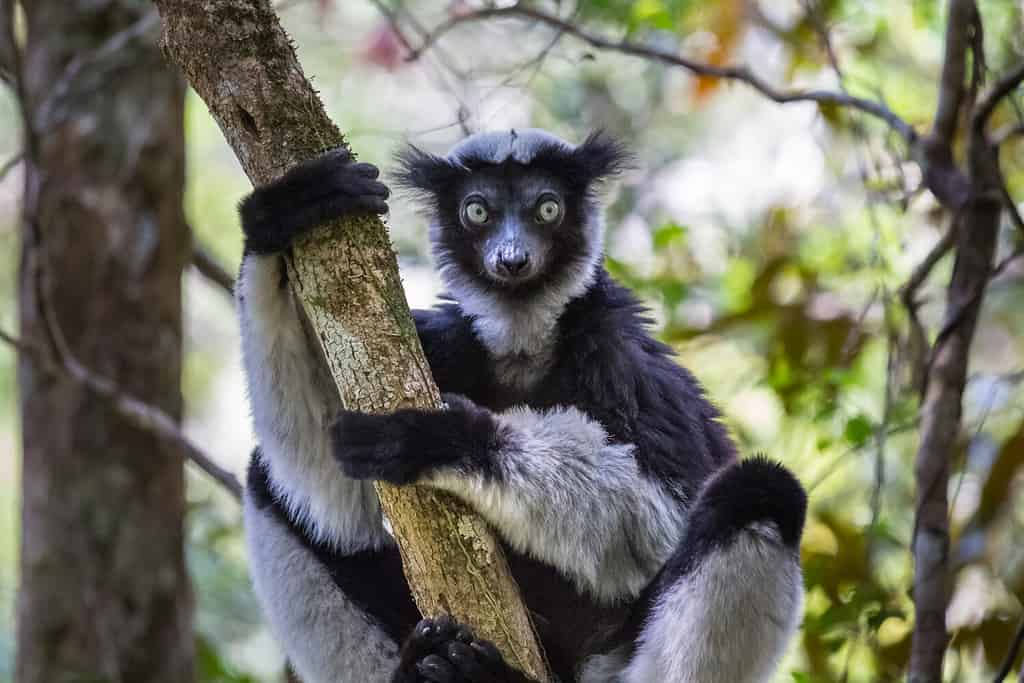
Indris are large primates up to 20 inches long, not including the tail, and weigh up to 11 pounds.
©Dudarev Mikhail/Shutterstock.com
Many beautiful plants and animals exist in the park and are a great attraction for tourists. In the park, you can enjoy seeing 11 lemur species, including indris and mouse lemurs, and many other endemic species. The park is most well known for its indri population, which is the largest species of lemur. An extensive reintroduction program repopulated the area with diademed sifaka and black-and-white ruffed lemurs which had diminished due to habitat loss. Other animals to look for are various species of chameleons, Madagascar tree boas, fossas, and painted mantellas.
To enter Andasibe-Mantadia National Park, visitors must be accompanied by a local guide. Once you are in, there is plenty to do. Nature walks and animal tracking, especially of resident indris, are popular activities. Birdwatching is also a worthwhile pastime in the area due to the 110 species of birds that live there. If you visit between January and March, however, you will experience heavy rains and have a difficult time viewing wildlife.
The photo featured at the top of this post is © Ondrej_Novotny_92/Shutterstock.com
Thank you for reading! Have some feedback for us? Contact the AZ Animals editorial team.




